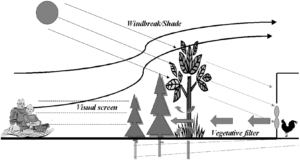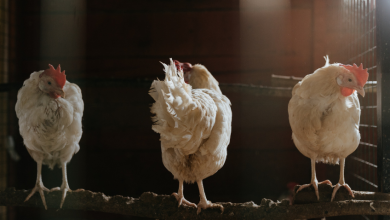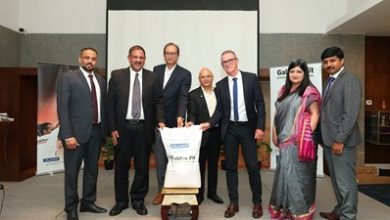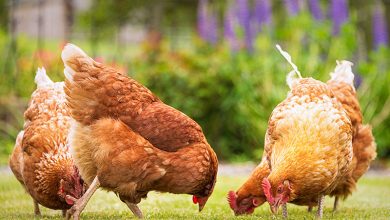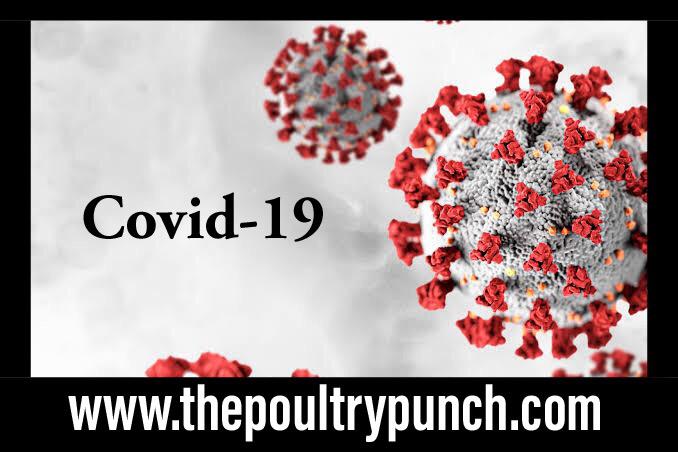Managemental strategies to reduce air pollution from poultry
Dr.Gautham Kolluri1, Dr.N.Ramamurthy2 and Dr.R.Richard Churchil3
M.V.Sc Scholar1, Professor and Head2, Associate Professor3,
Department of Poultry Science, Madras Veterinary College, TANUVAS, Chennai-07
Air emissions from poultry and livestock production are numerous and may include dust or particulate matter, odours, endotoxins, methane, hydrogen sulphide, carbon dioxide, mineral emission like P, N, Zn, and Cu and nitrogenous compounds, including ammonia. Ammonia emissions have the potential for wet and dry deposition and contamination of surface and ground water. The high concentrations of aerial pollutants in poultry houses are of concern for mainly farmer’s and birds health, which may be harmed by regular daily exposure to heavy burdens of aerial endotoxins, that arise from lipo-polysaccharide membrane fragments of Gram-negative bacteria, non-specific nuisance dusts and irritant gases, particularly ammonia which also causes respiratory infections by opportunistic pathogens. Poultry production contributes 4% of total ammonia emission.
Mineral emissions also pose environmental risks, only when the nutrients in the manure produce in excess which on application to land, runs into waterways and water bodies or be emitted into the air, causing disruptions in the ecological balance. The amount of mineral emission from a given animal production facility is the difference between the amount that is fed to the animals and the amount that is retained in the meat, milk, or egg products that are destined for human consumption.
Mitigation strategies to minimize environmental impacts include nutritional strategies, the primary being to minimize the feeding nutrients in excess of dietary needs, ventilation and manure management. The various mitigating strategies are of discussed briefly.
Housing management : Traditionally improving air quality in poultry houses has been largely accomplished through ventilation. Increased ventilation reduces pollutants within the poultry house but translate directly into higher emissions. Ventilation is therefore, more of in house air quality control method then a strategy to inhibit the formation and poultry emissions.
House cleaning : It is a simple technique of reducing dust emissions from poultry buildings. Regular house cleaning, including vacuuming and power washing between flocks, reduces the volume and potential for contamination of the air in the house as well as air exhausted from the building remove litter or manure, dry clean, wet wash, disinfect, and thoroughly clean and disinfect the feeding and drinker systems and then allow enough downtime. Regular sweeping and vacuuming of poultry houses in locations where dust, feathers, and dander collect, would likely improve air quality for birds and farm workers as well.
Oil and Water Application : Oil can be applied both manually with a handheld sprayer or automatically using a permanently installed sprinkler system. It is important that droplet size is not too large, resulting in poor oil distribution, or too small, which may be a health hazard. Ultrasonic sprayer generating 7-150μm diameter particles with a 2% solution of emulsified canola oil significantly reduces dust by 47%. The oil and water mixtures reduced dust concentrations approximately 50%, whereas the pure water application reduces dust to about 30%.
Ozonation – Ozone (O3) is a powerful oxidizing agent and a natural germicide.
Vegetative Shelter Belts : Strategically planting trees, shrubs, and other vegetation around poultry houses offers several potential benefits. Trees, shrubs, and other vegetative materials strategically planted around poultry houses have the potential to foster better neighbor relations by filtering dust, feathers, odour, and noises. Potential environmental benefits include reduced atmospheric ammonia loss, providing a visual screen from routine activities and enhancing the public’s perception of the industry and also reduce surface and groundwater contamination. It also acts as windbreak and a source of shade to reduce seasonal temperature extremes and as a filter for airborne pathogens for improved biosecurity.
A model of using vegetative shelters in poultry house
Biofilters : Biofilters are those that filter dust, ammonia, hydrogen sulfide, and other undesirable odours in poultry houses. The material is usually organic in nature with a resident microbial film that helps in degradation of gases and odors in addition to its trapping function. The contaminants are then oxidized to produce biomass, carbondioxide, water and inorganic salts. Straw, compost, and woodchips are good filter materials as long as particle size (>20 mm) and porosity is maintained for good airflow. Biofilters should be placed near exhaust fan so that the exhausted air from poultry house directly enters into these filters through the fan. Hence contaminants will get reduced. Humidifier must be placed between these two so as to maintain optimum moisture level in biofilters.
Water filters : By utilizing water as a scrubbing media, these filters trap emissions in them. These systems have been used for control of industrial air pollution and have the potential to scrub dust, ammonia, sulfur compounds, and nitrous oxides from poultry houses. Two channel water filters made of cellulose material, with water flowing from top to bottom through the first channel and gets acidified water and flows through the second, provides better air trapping.
Wind breaks : It is a simple strategy of enhancing the dispersion of dust and odour on a local scale with the use of natural and artificial windbreaks. They reduce dust and odour downwind by both dropping particulates and lifting emissions into the upper air stream for greater dispersion and dilution. Natural windbreaks comprised of trees and shrubs take 3 to 10 yr to grow, offer visual protection for the farm, and also trap particulates and odour.
Electrostatic precipitation : Electrostatic precipitation or air cleaning is a technique of removing the air particles from a flowing gas (such as air) using the force of an induced electrostatic charge. Electrostatic precipitators/ air cleaners are highly efficient filtration devices that minimally impede the flow of gases through it, and can easily remove fine particulate matter such as dust and smoke from the air stream. This device generates negative gas ions which bind to incoming air or dust particles that make these negatively charged particles to get captured on a positively charged plate in the device. Hence, the resulting air from the precipitator is pure and filtered. The implantation of this device in poultry houses reduces 60% airborne dust; 76% total bacteria and 56% ammonia. In caged layer houses, around 36.6 to 65.6% reduction in airborne dust can also be achieved, which provides a comfortable environment to birds and humans too.
Litter Management
Use of chemical additives : These chemicals have been classified into two categories: those that act to inhibit microbial growth (which would slow uric acid decomposition) and those that combine with and neutralize ammonia (Carlile, 1984). Odour and moisture absorbents typically are clay-based products containing zeolites; hydrous silicates that can act as ion-exchangers and absorbents. By lowering the moisture content of poultry manure and litter, absorbents inhibit the microbial activity associated with the formation and volatilization of NH3.
Compounds like aluminium (Aluminium sulfate-alum, Aluminium chloride), Calcium and iron-containing compounds (ferric chloride, ferrous sulfate), zeolites like clinoptilolite, antibiotics, potassium permanganate, hydrogen peroxide, sulfuric acid, chlorine, yucca saponin, sodium bisulfate, phosphoric acid, superphosphate, formaldehyde, hydrated lime, lime stone, gypsum, zinc sulphate, copper sulphate, magnesium sulphate, and manganese chloride reduce microbial uricase activity thereby reducing environmental pollution. Alum application in litter also reduces ammonia emissions. Zinc sulfate is most effective in reducing manure pH and the growth of uric acid utilizing bacteria. On addition to fresh manure, ZnSO4 reduces ammonia volatilization and increases total nitrogen retention by almost two-fold. Dietary supplementation of Zn can also reduce ammonia losses and also increase total nitrogen retention.
Organic acids are another choice to acidify litter and reduce ammonia volatilization. Litter can be treated with 5% citric acid, 4% tartaric acid, or 1.5% salicylic acid and it reduces litter pH below 5, both litter and air ammonia concentrations, and also inhibits the growth of E. coli, Salmonella enteritidis, Proteus, and Pseudomonas sp.
Various extracts of the yucca plant are claimed to reduce ammonia levels in poultry houses. A soluble component of the yucca plant seems able to bind ammonia, preventing its release from manure, which is especially important in confinement housing systems. Most poultry will react adversely to 50 ppm ammonia, and this is in contrast to the level of 20-30 ppm which is the usual detection range for humans.
Nitro-compounds such as nitrothane, nitrothanol, nitropropanol, and nitropropianic acid have potential to reduce ammonia volatilization in poultry manure acid–utilizing microorganisms. 2-nitro-1-propanol exhibits bactericidal tendencies that inhibit the production of several foodborne pathogens such as Salmonella typhimurium, Campylobacter jejuni, Listeria monocytogenes, and Escherichia coli O157:H7. Amendments with nitrifying bacteria have the potential to reduce manure NH3 and NH4 levels as bacteria oxidize them to nitrite and nitrate, NO2 and NO3. Raking of litter must be done regularly to ensure proper mixing of these additives in litter and also to remove any buildup of moisture.
Composting : Composting of poultry litter, at the right moisture, carbon:nitrogen ratio, and temperature with proper aeration can reduce ammonia losses and retain fertilizer value. Using wheat straw and peat reduced ammonia losses by 33.5 and 25.8%, respectively in composting of poultry manure. Zeolite is a more effective NH3 (or NH4) adsorbent than soil and reduces NH3 losses by 60%. Zeolites, calcium and aluminum salts, and acidifiers also improve nitrogen retention and reduce ammonia volatilization.
Feeding management : Dietary strategies mainly aim at nutrient reduction, particularly dietary protein content, which can result in a reduction of NH3 formation. Feeding of low protein diets result in reduced N excretion and subsequent NH3 volatilization. Other dietary manipulation strategies include feed formulation based on amino acid requirements rather than crude protein; optimizing the dietary amino acid profile with bird requirements, phase feeding for current growth and production; selection of feed ingredients with low nutrient variability to reduce protein margins of safety; and use of feed enzymes and additives. Supplementation of diets with an enzyme cocktail, significantly improved protein digestibility, as well as the digestibility of starch, fat, and energy. Better accounting for ingredient CP, amino acid variability, and digestibility can reduce over-formulation and N excretion. Immunize birds against the enzymes responsible for ammonia formation. Jackbean urease enzyme is of most importance. On injection into hens, it develops antibodies to the enzyme and passes them on as maternal antibodies to their chicks. Hens can also be immunized with microbial uricase and produce high levels of uricase-specific antibodies in the egg yolk. These antibodies (IgY) have the potential as manure amendments or as a dietary supplements to reduce the breakdown of uric acid to urea. It also prevents harmful effects of ammonia in the intestinal tract.
Use of Direct Fed Microbial (DFM) : Complex cultures of multiple organisms tend to demonstrate greater efficacy in augmenting BW gain than specified single or few strains. It also reduces mortality in chickens receiving 0.10% Lactobacillus culture, from 8.2% in control birds to 3.2%.
General strategies for reduction of high mineral excretion includes :
Minimize Feed and Water Waste : In general, N and P content in the manure will increase by 1.5% for each 1% increase in feed waste. Poor feeder design and positioning and feed form can result in significant animal feed waste, which ultimately ends up in manure or litter. Poultry will also waste a significant amount of feed if feeders are overfilled, adjusted too low, or poorly designed (Beyer et al., 2001). Small birds will climb into feeders and scratch out feed, and larger birds will fling feed out with their beaks or bills if the feeder is poorly designed or adjusted. Hence feeder height should be adjusted such that the top of the feed pan is level with the base of the bird’s neck, and the feed fill level to only 25% of the feeder pan.
Water also affects the amount of minerals emitted, but it will adversely affect manure or litter processing and disposal costs. It can also lead to an increased incidence of pests (bacteria, litter beetles, flies, etc.), ammonia emission, and air quality problems, thereby affecting volume and nutrient quality of the litter to be disposed.
Feed Manufacturing : Feed manufacturing technology can have a significant impact on minimizing nutrient emissions poultry operations by producing the feed in a form that reduces waste and improves the digestibility of the feed. Fine grinding and pelleting feed are effective ways to improve feed use and decrease DM and nutrient excretion. By reducing the particle size, the surface area of the feed ingredient particles is increased, allowing for greater interaction with digestive enzymes.
Feed formulation: Since birds can excrete all of the minerals they are unable to assimilate as tissue growth, estimation of accurate of nutritional requirements is essential to optimize dietary nutrient balance and to minimize mineral emission.
Estimating Amino Acid Requirements by the Ideal Protein Concept: Understanding amino acid utilization for protein synthesis and maintenance are critical to the formulation of an accurate ideal protein profile and thus for minimizing N excretion. Thus, the ideal protein concept can play an integral role in animal production, particularly as non-traditional protein containing ingredients become increasingly available. All of the indispensable amino acids are expressed as a percentage of lysine, which is the reference amino acid. Using an established set of ideal ratios of other indispensable amino acids to lysine, it is possible to formulate an ideal protein without having to independently establish requirements for each indispensable amino acid.
Genetic Modification of Grains and Oilseeds for Better Nutrient Availability: New sources of highly digestible feedstuffs are being developed by crop breeders that will have a remarkable impact on the efficiency of nutrient utilization of non-ruminants. They are low-phytate or high-aP (HAP) corn (Stillborn, 1998) that contains the lpa21 gene. This new genotype contains the same level of total P as normal corn varieties, but only 35% of the total P is PP compared to about 80% in other corn varieties. The P in HAP corn is indeed more nutritionally available to poultry (Waldroup et al., 2000). Soybean phytic acid content could be reduced with a concomitant decrease in PP from 70 to 24% of total P through breeding efforts. Another strategy being implemented is the incorporation of fungal phytase gene into plants such that the phytase is expressed at high levels in the seed. Ammonia emission can be reduced by feeding low-protein diets with supplemental synthetic amino acid. Reduction of protein by 1% reduces ammonia emission by almost 10%. Addition of Deodorase® to feed at 100-150 g/tonne reduces environmental ammonia levels by 20 – 30%, with improved growth rate and reduced mortality.
Conclusion:
For the poultry industry, concerns about poultry emissions especially ammonia are multifaceted and include issues of live production performance, animal health, and welfare, and environmental impact. Bird performance and health can be affected by both respiratory disease challenge and physical damage due to high ammonia concentration. Hence efficient management procedures should be concerned to mitigate these emissions from poultry production for the well being of humans and animals.
